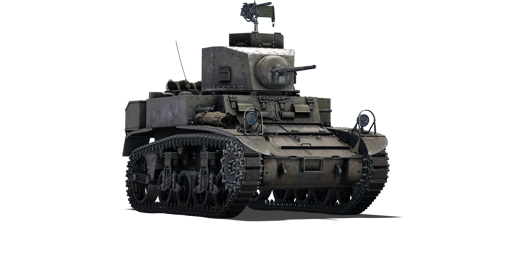The M3 is the first variant of the M3 light tank family. While observing events in Europe and Asia during World War II, American tank designers noticed the M2 was becoming increasingly obsolete and set about improving the design. The M3 was developed following the German invasion of France during World War II. The fast collapse of France prompted the U.S. Army to consider a new doctrine, which resulted in an independent U.S. armoured force. The M3 was an improved design with thicker armour, redesigned suspension, and a new gun recoil system. The vehicle's production began in March 1941 and lasted until October 1943. Furthermore, the M3 chassis served as the basis for a variety of weaponry throughout the war (for example, the 75 mm Howitzer Motor Carriage M8 (HMC), also known as the M8 "Scott").
Introduced in Update 1.45 "Steel Generals", the M3 is a U.S. Army light tank that shares many common characteristics with the M2 light tank family. With a better engine, slightly improved armour thickness, and a more reliable transmission system, the M3 is able to manoeuvre around the battlefield extremely easily. In general, it offers a very similar playstyle to a light attack or scouting vehicle, making it well-suited for beginners to learn and experience the beginning of the U.S. Army ground forces. Many variants of the M3 light tanks family were also seen in service in many other countries throughout the world during World War II, which is reflected in the ground forces in many other nations in War Thunder.















